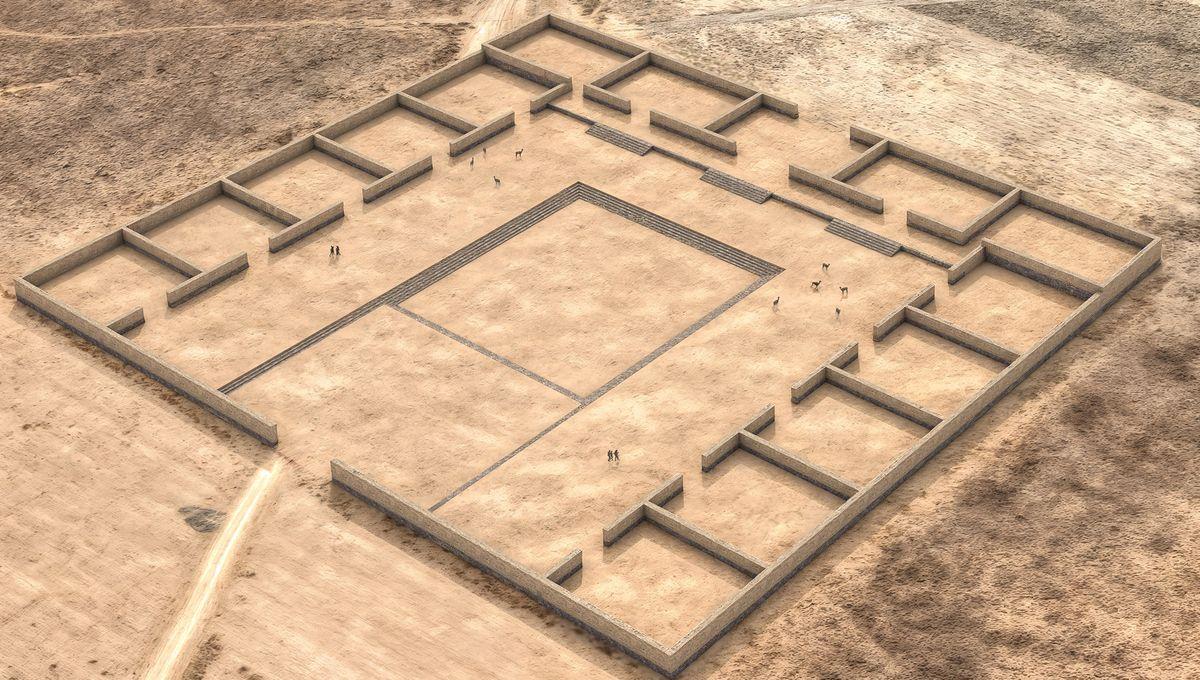-
Feed de notícias
- EXPLORAR
-
Páginas
-
Blogs
-
Fóruns
Pre-Inca Temple Was A “Ritual Gateway” To Lost Civilization Of Tiwanaku

Pre-Inca Temple Was A “Ritual Gateway” To Lost Civilization Of Tiwanaku
A newly discovered temple in the Bolivian Andes once served as ceremonial crossroads where llama caravans carrying agricultural goods and psychedelic drugs were processed by a once-powerful civilization. Known as Tiwanaku, this ancient city-state on the shore of Lake Titicaca mysteriously vanished around 1,000 years ago, and this new finding has helped researchers piece together the extent of its power and territory.
“Their society collapsed sometime around 1000 CE and was a ruin by the time the Incas conquered the Andes in the 15th century,” explained José Capriles from The Pennsylvania State University in a statement. “At its peak, it boasted a highly organized societal structure, leaving behind remnants of architectural monuments like pyramids, terraced temples and monoliths, most of which are distributed in sites around Lake Titicaca and, while we know Tiwanaku’s control and influence extended much further, scholars debate how much actual control over distant places it had.” In a major contribution to this debate, Capriles and his colleagues have published a new study describing the previously unknown temple, which lies some 215 kilometers (130 miles) south of Tiwanaku itself and has been dubbed Palaspata, after the Indigenous name for the area in which it was discovered. Combining satellite imagery, drone photography, and photogrammetry, the researchers were able to build up an image of the ancient structure, which is currently evidenced by a series of faint lines depicting a large rectangular formation. Measuring 125 meters by 145 meters (410 by 475 feet), Palaspata features 15 “modular enclosures” arranged around a central courtyard, and closely resembles the style and layout of other ritual structures such as the Kalasasaya temple in Tiwanaku itself. The temple's entrance was aligned with the position of the sun on the equinox. Image credit: José Capriles / Penn State What’s significant about this find, however, is that until now archaeologists had never uncovered such a construction beyond the shores of Lake Titicaca, and the new discovery therefore confirms that the ancient polity exercised tight control over a wide area. Importantly, Palaspata is located at the intersection of several major trade routes that linked the highlands around the lake with the fertile valleys surrounding Cochabamba to the east. Previous research has indicated that maize was imported from the Cochabamba region to Tiwanaku, where it was often brewed into chicha, a type of beer that was consumed in public rituals. “Various other prestigious goods such as polychrome vessels, sodalite and possibly hallucinogenic plants travelled to Tiwanaku from the eastern Andes, propelled by llama caravans,” write the study authors. The discovery of fragmented cups that were once used for drinking chicha at Palaspata therefore hints at the site’s role as both a trade hub and a ceremonial center. The style of pottery found at Palaspata indicates that chicha was once consumed at the site. Image credit: José Capriles / Penn State Based on these findings, the researchers conclude that “Palaspata likely functioned as a ritual gateway between two major contrasting ecological and productive regions,” with ceremonies being conducted in the central courtyard while goods were stored, tallied and managed in the surrounding modules. Noting the alignment of the temple's entrance, the study authors suggest that major rituals may have been hosted on the equinoxes. And while the temple’s exact age remains unknown, these findings confirm that, “By the middle of the first millennium [CE], the southern highlands and the Cochabamba inter-Andean valleys became strongly influenced, if not fully controlled, by the expanding Tiwanaku state.” The study is published in the journal Antiquity.



